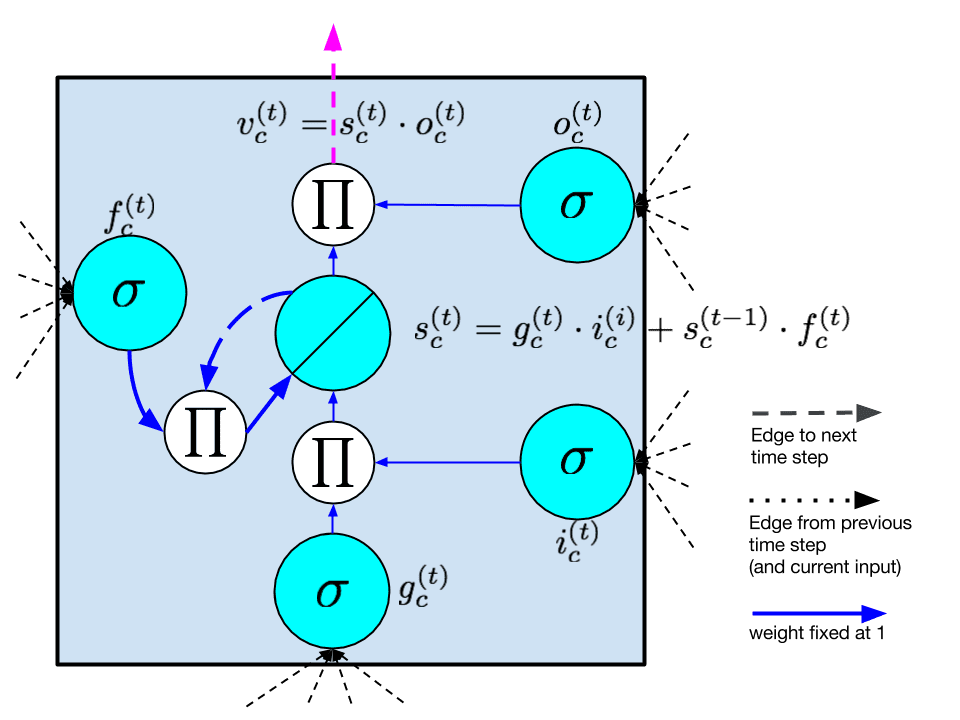Deep Learning and the Triumph of Empiricism
Deep Learning and the Triumph of Empiricism
By Zachary Chase Lipton, July 2015
Deep learning is now the standard-bearer for many tasks in supervised machine learning. It could also be argued that deep learning has yielded the most practically useful algorithms in unsupervised machine learning in a few decades. The excitement stemming from these advances has provoked a flurry of research and sensational headlines from journalists. While I am wary of the hype, I too find the technology exciting, and recently joined the party, issuing a 30-page critical review on Recurrent Neural Networks (RNNs) for sequence learning.

But many in the machine learning research community are not fawning over the deepness. In fact, for many who fought to resuscitate artificial intelligence research by grounding it in the language of mathematics and protecting it with theoretical guarantees, deep learning represents a fad. Worse, to some it might seem to be a regression.1
In this article, I'll try to offer a high-level and even-handed analysis of the useful-ness of theoretical guarantees and why they might not always be as practically useful as intellectually rewarding. More to the point, I'll offer arguments to explain why after so many years of increasingly statistically sound machine learning, many of today's best performing algorithms offer no theoretical guarantees.
Guarantee What?
A guarantee is a statement that can be made with mathematical certainty about the behavior, performance or complexity of an algorithm. All else being equal, we would love to say that given sufficient time our algorithm A can find a classifier H from some class of models {H1, H2, ...} that performs no worse than H*, where H* is the best classifier in the class. This is, of course, with respect to some fixed loss function L. Short of that, we'd love to bound the difference or ratio between the performance of H and H* by some constant. Short of such an absolute bound, we'd love to be able to prove that with high probability H and H* are give similar values after running our algorithm for some fixed period of time.
Many existing algorithms offer strong statistical guarantees. Linear regression admits an exact solution. Logistic regression is guaranteed to converge over time. Deep learning algorithms, generally, offer nothing in the way of guarantees. Given an arbitrarily bad starting point, I know of no theoretical proof that a neural network trained by some variant of SGD will necessarily improve over time and not be trapped in a local minima. There is a flurry of recent work which suggests reasonably that saddle points outnumber local minima on the error surfaces of neural networks (an m-dimensional surface where m is the number of learned parameters, typically the weights on edges between nodes). However, this is not the same as proving that local minima do not exist or that they cannot be arbitrarily bad.
Problems with Guarantees
Provable mathematical properties are obviously desirable. They may have even saved machine learning, giving succor at a time when the field of AI was ill-defined, over-promising, and under-delivering. And yet many of today's best algorithms offer nothing in the way of guarantees. How is this possible?
I'll explain several reasons in the following paragraphs. They include:
- Guarantees are typically relative to a small class of hypotheses.
- Guarantees are often restricted to worst-case analysis, but the real world seldom presents the worst case.
- Guarantees are often predicated on incorrect assumptions about data.
Selecting a Winner from a Weak Pool
To begin, theoretical guarantees usually assure that a hypothesis is close to the best hypothesis in some given class. This in no way guarantees that there exists a hypothesis in the given class capable of performing satisfactorily.
Here's a heavy handed example: I desire a human editor to assist me in composing a document. Spell-check may come with guarantees about how it will behave. It will identify certain misspellings with 100% accuracy. But existing automated proof-reading tools cannot provide the insight offered by an intelligent human. Of course, a human offers nothing in the way of mathematical guarantees. The human may fall asleep, ignore my emails, or respond nonsensically. Nevertheless, a he/she is capable of expressing a far greater range of useful ideas than Clippy.
A cynical take might be that there are two ways to improve a theoretical guarantee. One is to improve the algorithm. Another is to weaken the hypothesis class of which it is a member. While neural networks offer little in the way of guarantees, they offer a far richer set of potential hypotheses than most better understood machine learning models. As heuristic learning techniques and more powerful computers have eroded the obstacles to effective learning, it seems clear that for many models, this increased expressiveness is essential for making predictions of practical utility.
The Worst Case May Not Matter
Guarantees are most often given in the worst case. By guaranteeing a result that is within a factor epsilon of optimal, we say that the worst case will be no worse than a factor epsilon. But in practice, the worst case scenario may never occur. Real world data is typically highly structured, and worst case scenarios may have a structure such that there is no overlap between a typical and pathological dataset. In these settings, the worst case bound still holds, but it may be the case that all algorithms perform much better. There may not be a reason to believe that the algorithm with the better worst case guarantee will have a better typical case performance.
Predicated on Provably Incorrect Assumptions
Another reason why models with theoretical soundness may not translate into real-world performance is that the assumptions about data necessary to produce theoretical results are often known to be false. Consider Latent Dirichlet Allocation (LDA) for example, a well understood and remarkably useful algorithm for topic modeling. Many theoretical proofs about LDA are predicated upon the assumption that a document is associated with a distribution over topics. Each topic is in turn associated with a distribution over all words in the vocabulary. The generative process then proceeds as follows. For each word in a document, first a topic is chosen stochastically according to the relative probabilities of each topic. Then, conditioned on the chosen topic, a word is chosen according to that topic's word distribution. This process repeats until all words are chosen.
Clearly, this assumption does not hold on any real-world natural language dataset. In real documents, words are chosen contextually and depend highly on the sentences they are placed in. Additionally document lengths aren't arbitrarily predetermined, although this may be the case in undergraduate coursework. However, given the assumption of such a generative process, many elegant proofs about theoretical properties of LDA hold.
To be clear, LDA is indeed a broadly useful, state of the art algorithm. Further, I am convinced that theoretical investigations of the properties of algorithms, even under unrealistic assumptions is a worthwhile and necessary step to improve our understanding and lay the groundwork for more general and powerful theorems later. In this article, I seek only to contextualize the nature of much known theory and to give intuition to data science practitioners about why the algorithms with the most favorable theoretical properties are not always the best performing empirically.
The Triumph of Empiricism
One might ask, If not guided entirely by theory, what allows methods like deep learning to prevail? Further Why are empirical methods backed by intuition so broadly successful now even as they fell out of favor decades ago?
In answer to these question, I believe that the existence of comparatively humongous, well-labeled datasets like ImageNet is responsible for resurgence in heuristic methods. Given sufficiently large datasets, the risk of overfitting is low. Further, validating against test data offers a means to address the typical case, instead of focusing on the worst case. Additionally, the advances in parallel computing and memory size have made it possible to follow-up on many hypotheses simultaneously with empirical experiments. Empirical studies backed by strong intuition offer a path forward when we reach the limits of our formal understanding.
Caveats
For all the success of deep learning in machine perception and natural language, one could reasonably argue that by far, the three most valuable machine learning algorithms are linear regression, logistic regression, and k-means clustering, all of which are well-understood theoretically. A reasonable counter-argument to the idea of a triumph of empiricism might be that far the best algorithms are theoretically motivated and grounded, and that empiricism is responsible only for the newest breakthroughs, not the most significant.
Few Things Are Guaranteed
When attainable, theoretical guarantees are beautiful. They reflect clear thinking and provide deep insight to the structure of a problem. Given a working algorithm, a theory which explains its performance deepens understanding and provides a basis for further intuition. Given the absence of a working algorithm, theory offers a path of attack.
However, there is also beauty in the idea that well-founded intuitions paired with rigorous empirical study can yield consistently functioning systems that outperform better-understood models, and sometimes even humans at many important tasks. Empiricism offers a path forward for applications where formal analysis is stifled, and potentially opens new directions that might eventually admit deeper theoretical understanding in the future.
1Yes, corny pun.
 Zachary Chase Lipton is a PhD student in the Computer Science Engineering department at the University of California, San Diego. Funded by the Division of Biomedical Informatics, he is interested in both theoretical foundations and applications of machine learning. In addition to his work at UCSD, he has interned at Microsoft Research Labs.
Zachary Chase Lipton is a PhD student in the Computer Science Engineering department at the University of California, San Diego. Funded by the Division of Biomedical Informatics, he is interested in both theoretical foundations and applications of machine learning. In addition to his work at UCSD, he has interned at Microsoft Research Labs.
Related:
- Not So Fast: Questioning Deep Learning IQ Results
- The Myth of Model Interpretability
- (Deep Learning’s Deep Flaws)’s Deep Flaws
- Data Science’s Most Used, Confused, and Abused Jargon
- Differential Privacy: How to make Privacy and Data Mining Compatible
Deep Learning and the Triumph of Empiricism的更多相关文章
- Why Deep Learning Works – Key Insights and Saddle Points
Why Deep Learning Works – Key Insights and Saddle Points A quality discussion on the theoretical mot ...
- Does Deep Learning Come from the Devil?
Does Deep Learning Come from the Devil? Deep learning has revolutionized computer vision and natural ...
- Deep learning:五十一(CNN的反向求导及练习)
前言: CNN作为DL中最成功的模型之一,有必要对其更进一步研究它.虽然在前面的博文Stacked CNN简单介绍中有大概介绍过CNN的使用,不过那是有个前提的:CNN中的参数必须已提前学习好.而本文 ...
- 【深度学习Deep Learning】资料大全
最近在学深度学习相关的东西,在网上搜集到了一些不错的资料,现在汇总一下: Free Online Books by Yoshua Bengio, Ian Goodfellow and Aaron C ...
- 《Neural Network and Deep Learning》_chapter4
<Neural Network and Deep Learning>_chapter4: A visual proof that neural nets can compute any f ...
- Deep Learning模型之:CNN卷积神经网络(一)深度解析CNN
http://m.blog.csdn.net/blog/wu010555688/24487301 本文整理了网上几位大牛的博客,详细地讲解了CNN的基础结构与核心思想,欢迎交流. [1]Deep le ...
- paper 124:【转载】无监督特征学习——Unsupervised feature learning and deep learning
来源:http://blog.csdn.net/abcjennifer/article/details/7804962 无监督学习近年来很热,先后应用于computer vision, audio c ...
- Deep Learning 26:读论文“Maxout Networks”——ICML 2013
论文Maxout Networks实际上非常简单,只是发现一种新的激活函数(叫maxout)而已,跟relu有点类似,relu使用的max(x,0)是对每个通道的特征图的每一个单元执行的与0比较最大化 ...
- Deep Learning 23:dropout理解_之读论文“Improving neural networks by preventing co-adaptation of feature detectors”
理论知识:Deep learning:四十一(Dropout简单理解).深度学习(二十二)Dropout浅层理解与实现.“Improving neural networks by preventing ...
随机推荐
- 推荐一款App运营工具:AYL爱盈利App榜单监控
对包括开发者.产品运营.投资人在内的诸多移动互联网从业人员而言,国内Android应用市场和IOS应用市场的榜单变化数据时大家的必修功课之一:看看这段时间所关注的垂直领域里最火的是哪几款应用:看看竞争 ...
- CSS之图片关闭
<!DOCTYPE html PUBLIC "-//W3C//DTD XHTML 1.0 Transitional//EN" "http://www.w3.org/ ...
- JAVA之数据溢出
Integer在java中属于包装类,既能用于字符串与整型的转换,也能用于拆箱与装箱 package ABC; public class A{ public static void main(Stri ...
- android 获取前台进程
String getTopActivity() { ActivityManager manager = (ActivityManager)getSystemService(ACTIVITY_SERVI ...
- 忍者无敌-实例讲解Cocos2d-x瓦片地图
实例比较简单,如图所示,地图上有一个忍者精灵,玩家点击他周围的上.下.左.右,他能够向这个方向行走.当他遇到障碍物后是无法穿越的,障碍物是除了草地以为部分,包括了:树.山.河流等. 忍者实例地图(TO ...
- UIViewSubviews多个views之间的关系
#import "ViewController.h" @interface ViewController () @end @implementation ViewControlle ...
- (转)卸载和安装LINUX上的JDK
卸载默认的: 用root用户登陆到系统,打开一个终端输入 # rpm -qa|grep gcj 显示内容其中包含下面两行信息 # java-1.4.2-gcj-compat-1.4.2.0-27jpp ...
- 用JS实现回文数的精准辨别!!!
笔者最近在一边看<JS高级程序设计3>一边在FCC上找题目练习啊.那叫一个爽.这不,刚刚用生命在课堂,寝室,实验室,图书馆等各种场所将第五章"引用类型"搞定,FCC便知 ...
- Php 操作事务
PHP来操作数据库 关于事务操作 连接数据 mysql_connect('localhost','root','123'); 设置字符集 mysql_query('set names utf8'); ...
- C++记录2
1, 求成员变量的偏移: 2, const实现机制:在编译期间完成,对于内置类型,如int, 编译器可能使用常数直接替换掉对此变量的引用.而对于结构体不一定. 编译器在优化代码时把j直接优化成64h了 ...
